
by Elizabeth Andoh | Nov 11, 2022 | Kitchen Culture, Year-Round
小豆・あずきADZUKI (Vigna angularis) Written with calligraphy for “small” and “bean” these diminutive (about 1/4-inch, less than 1 cm) red beans play an important role in Japanese cookery, appearing in both savory dishes and in sweets. There are...
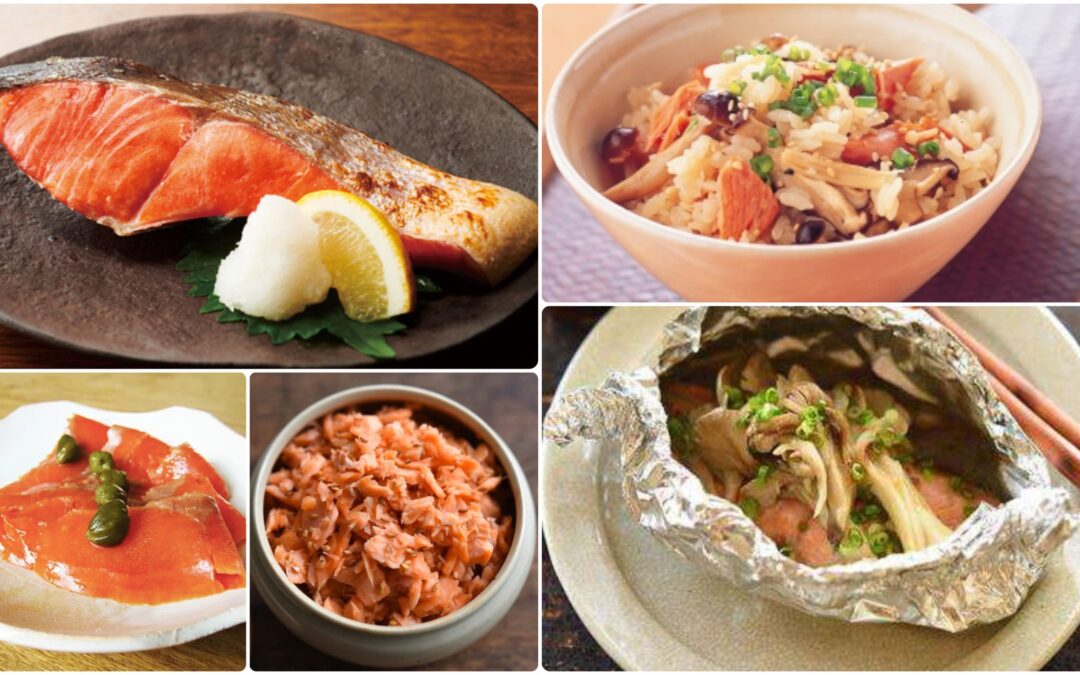
by Elizabeth Andoh | Oct 10, 2022 | Kitchen PROJECTS, Year-Round
SALMON・鮭・SAKÉ Salmon lends itself to variety of cooking methods — it can be skillet-seared, steamed, broiled, grilled, braised, smoked, poached and fried. PROJECT Salmon is about preparing salmon in many different ways in your kitchen. You’ll find lots of...
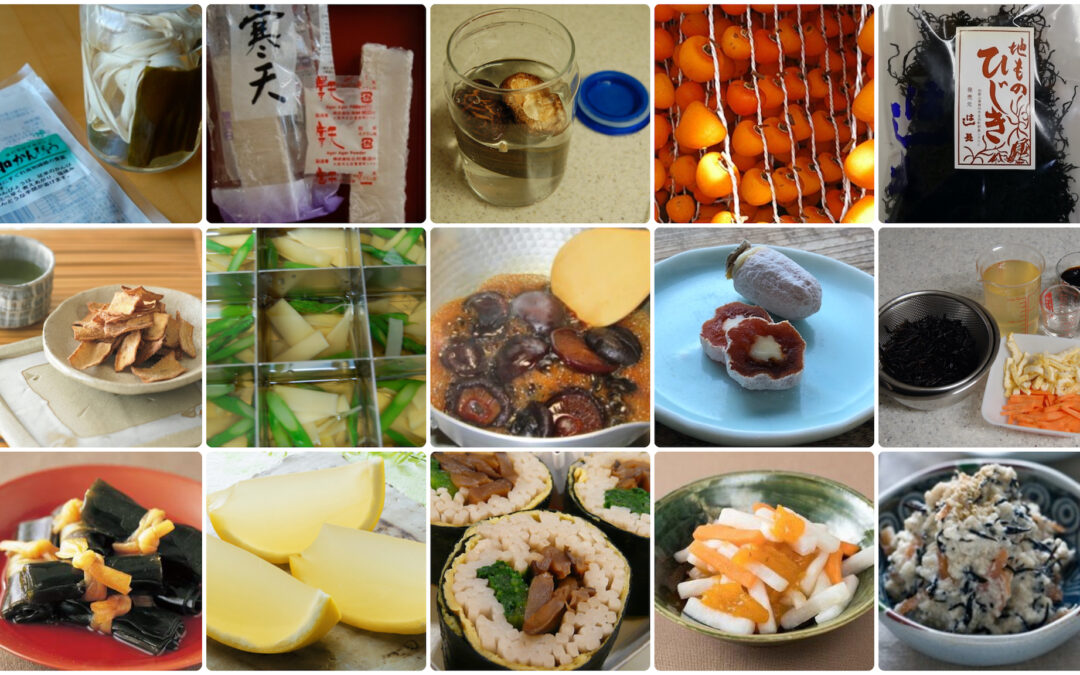
by Elizabeth Andoh | Sep 25, 2022 | Kitchen Culture, Year-Round
In the photo above, there are five vertical columns, from left to right: KAMPYO (soaking in water with kombu; deep-fried to make chips; used as an edible tie for kombu rolls); KANTEN (sticks and powdered form, made into a savory bamboo shoot and asparagus aspic, lemon...
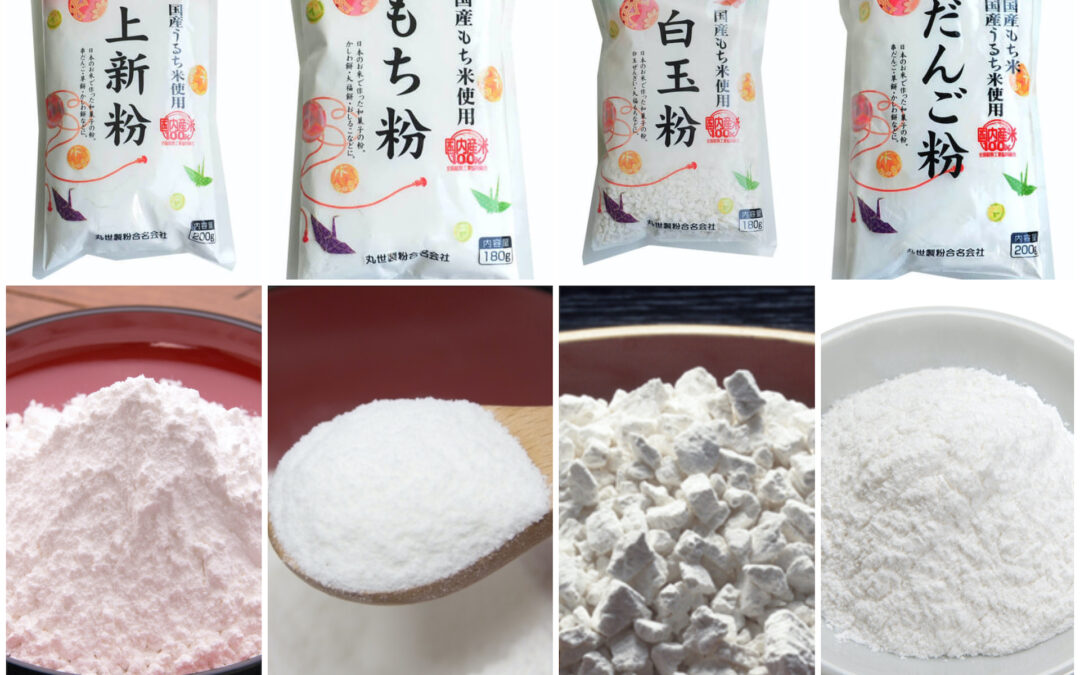
by Elizabeth Andoh | Sep 2, 2022 | Kitchen PROJECTS, Year-Round
米の粉PROJECT: Komé no KonaRice Flour In Japanese cookery there are four types of rice flour that are commonlyused. One is made from uruchi mai or “table rice,” several are made from mochi-gomé or “sticky rice” and one is made from a combination...
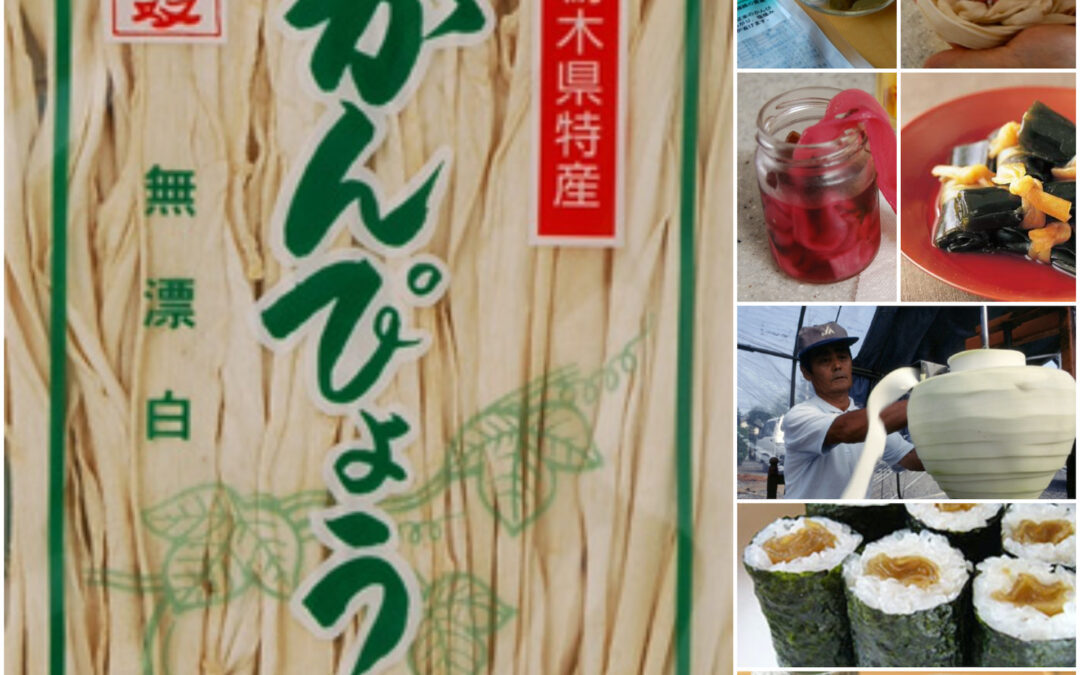
by Elizabeth Andoh | Jul 10, 2022 | Kitchen PROJECTS, Year-Round
干瓢・かんぴょう・KAMPYŌ This Kitchen PROJECT is about using KAMPYŌ, sun-dried fukubé gourd ribbons in YOUR kitchen. Be sure to source UNBLEACHED (無漂白 mu hyō haku) gourd ribbons so that you can use the softening liquid as a tasty stock. Gourd ribbons are used to tie up any...

by Elizabeth Andoh | May 16, 2022 | Kitchen Culture, Year-Round
ごぼう・牛蒡・Gobō (burdock root; Arctium lappa) Kimpira, named after a folk-hero celebrated for his fervent determination and fiery ways, is a quickly assembled, skillet-stirred vegetable dish finished with an incendiary 7-spice blend. Kimpira frequently appears on the menu...
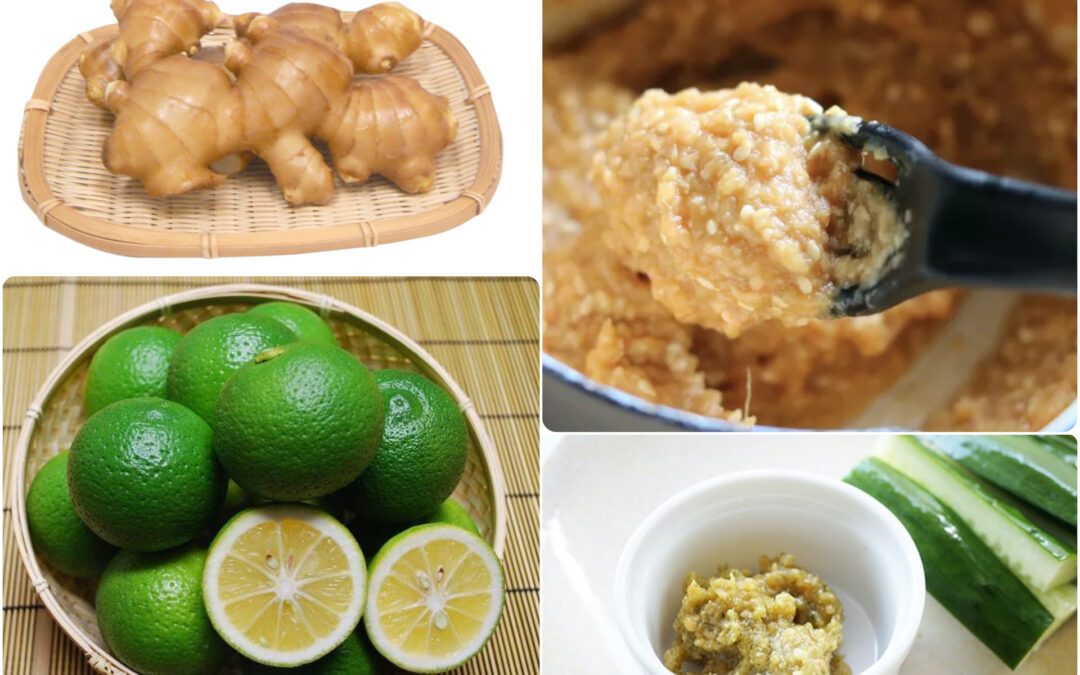
by Elizabeth Andoh | Apr 21, 2022 | Kitchen PROJECTS, Year-Round
PROJECT Flavored Miso This Kitchen PROJECT is about making flavored miso in YOUR kitchen. This page introduces two new flavored miso mixtures, one redolent with fruity kabosu, the other infused with smoky katsuo-bushi flakes. In addition, many recipes for flavored...

by Elizabeth Andoh | Mar 17, 2022 | Kitchen PROJECTS, Tabletop, Tools & Techniques, Year-Round
PROJECT Kushi This Kitchen PROJECT is about making SKEWERED FOOD in YOUR kitchen. For inspiration and recipes to get you started, use these resources: Black Sesame Miso Tōfu DengakuCrunchy Kushi AgéFuki no Tō Miso Dengaku(Vegan & Vegetarian Options) Oden Part...

by Elizabeth Andoh | Mar 17, 2022 | Kitchen Culture, Year-Round
串・KUSHISkewers Galore Because spearing or threading food on skewers makes cooking over a fire easier and more efficient it’s not surprising to find some sort of skewered food in nearly every food culture. There is (Brazil’s) churrasco, (Spain’s)...

by Elizabeth Andoh | Feb 25, 2022 | Kitchen PROJECTS, Year-Round
筑前煮 ・Chikuzen Ni This Kitchen PROJECT is about making CHIKUZEN NI (soy-braised vegetables in the Fukuoka style) in YOUR kitchen. A cross between a stir-fry and a stew, this dish no doubt has as many variations as there are households in Fukuoka. The BASIC RECIPE I...
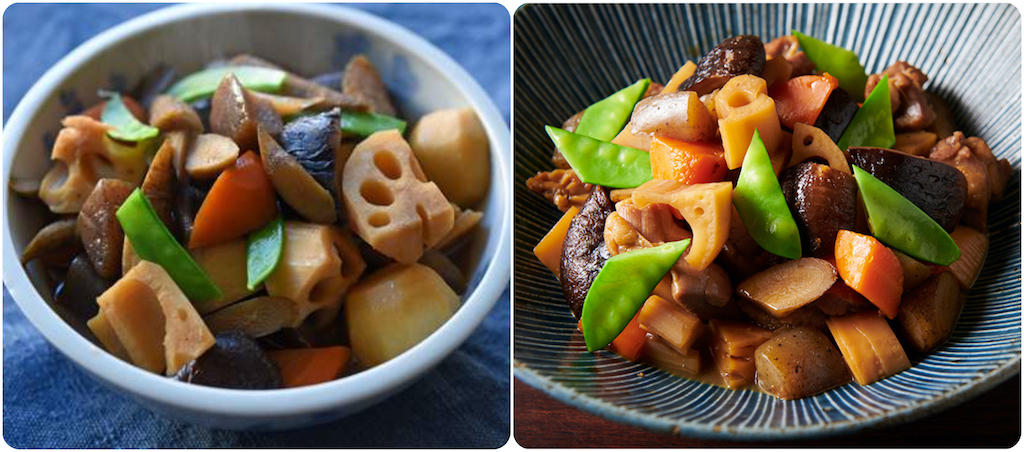
by Elizabeth Andoh | Feb 25, 2022 | Kitchen Culture, Year-Round
筑前煮・Chikuzen NiVegan Version: Soy-Braised Vegetables with Thick Fried TōfuClassic Version: Soy-Braised Vegetables with Chicken Chikuzen is the former name of a province, the area that is today part of Fukuoka Prefecture in Kyūshū. The word “ni” in the title of this...

by Elizabeth Andoh | Feb 20, 2022 | Kitchen PROJECTS, Year-Round
Above, Four Examples of Nyūmen: Hakusai, Carrot and Shiméji (top left); Egg Drop, Shiméji and Scallions (top right); Chicken and Mitsuba with Sanshō (bottom left); Shiitaké, Shiméji, Carrot and Mitsuba. 煮麺 ・Nyūmen This Kitchen PROJECT is about making NYŪMEN (sōmen...
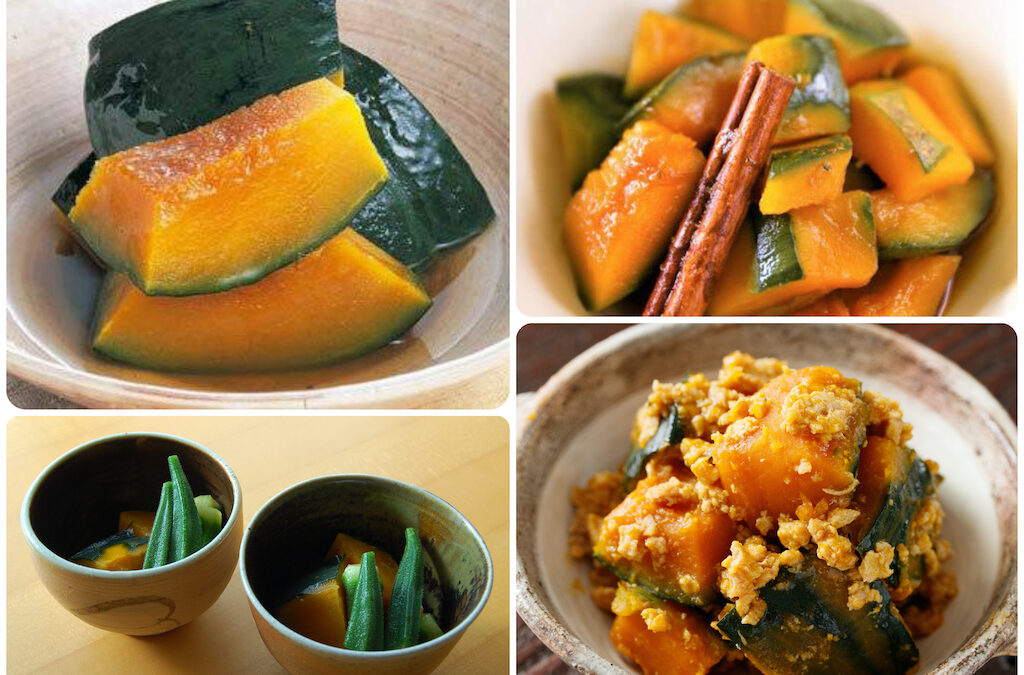
by Elizabeth Andoh | Oct 19, 2021 | Kitchen PROJECTS, Year-Round
Classic Soy-Simmered Kabocha & Variations Kabocha, a pumpkin-like squash with sweet, orangey-gold flesh and dark green, edible skin, frequently appears on the menu in Japan. The classic way to prepare kabocha is to simmer it in a slightly sweet soy-tinged stock....
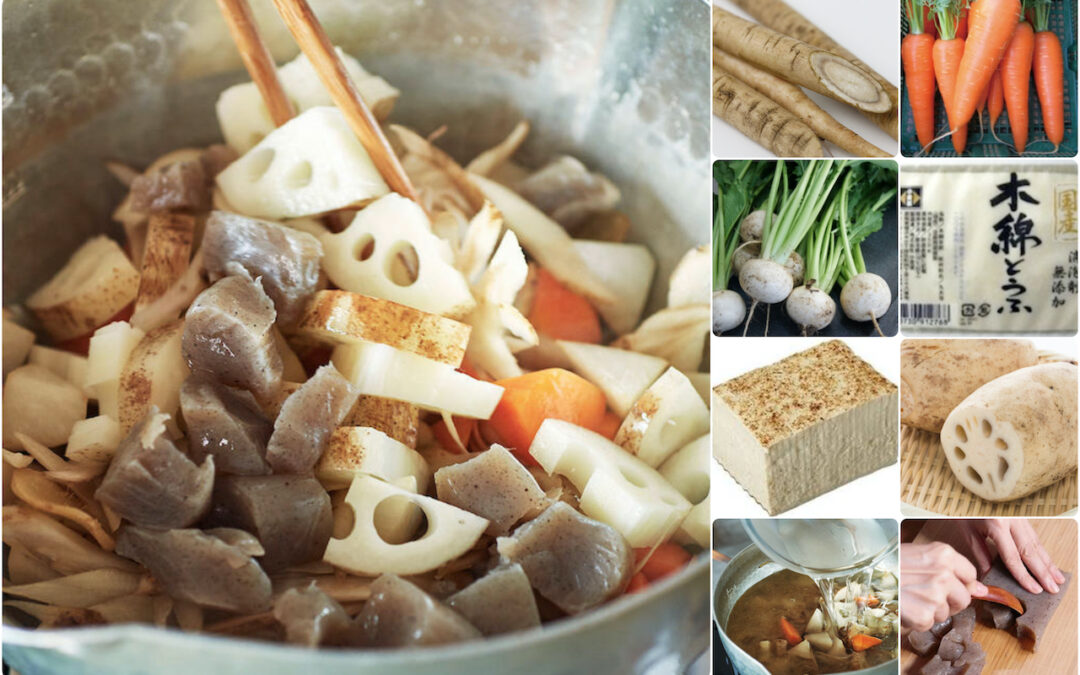
by Elizabeth Andoh | Oct 8, 2021 | Kitchen PROJECTS, Year-Round
BASIC RECIPE to assemble KENCHIN-JIRU When autumn evenings turn chilly, its time for a warm bowl of nutritious chowder. The origins of this one, kenchin-jiru, is thought to be resourceful monks at Kenchō-ji Temple (建長寺) in Kamakura. Utilizing vegetable scraps and bits...
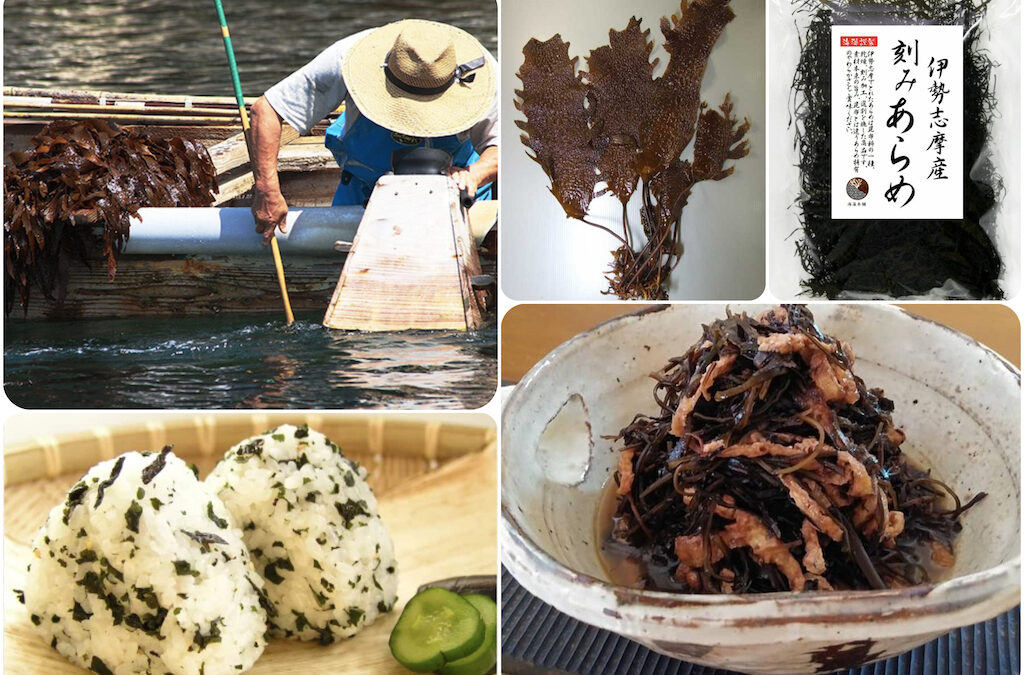
by Elizabeth Andoh | Jul 11, 2021 | Kitchen PROJECTS, Year-Round
Bring a Bounty of Sea Vegetables to YOUR Table Resources and recipes for preparing three versitile sea vegetables: ARAMÉ, WAKAMÉ, and HIJIKI. Cooking with ARAMÉ Aramé is often listed as a substitute for hijiki in soy-braised nimono dishes. Like hijiki, aramé is dark...
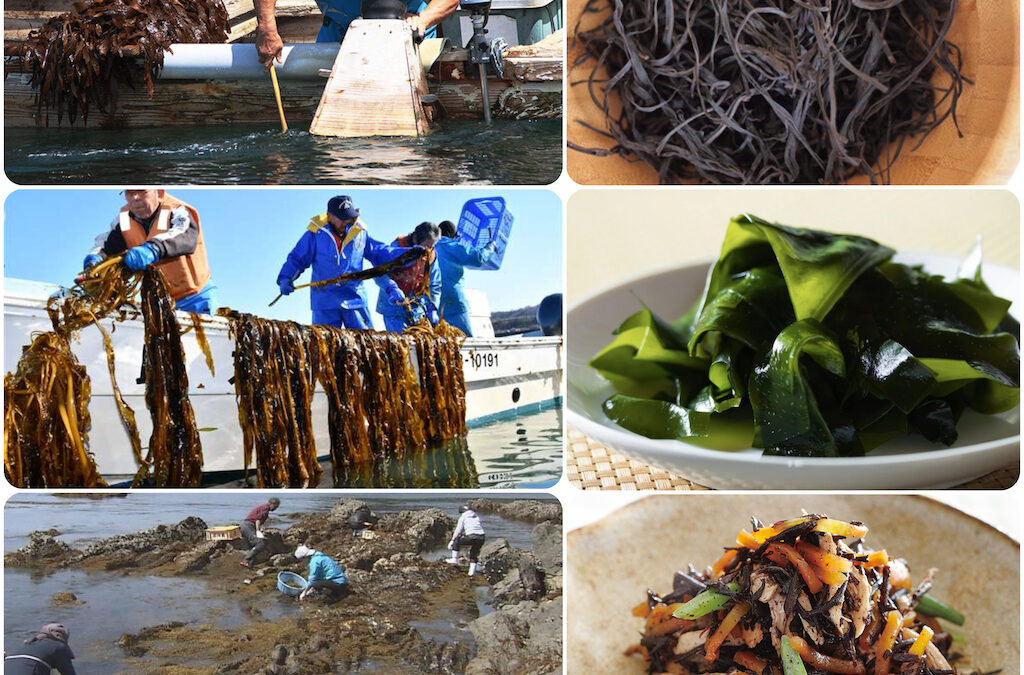
by Elizabeth Andoh | Jul 11, 2021 | Kitchen Culture, Year-Round
Celebrating the Bounty of the Seas The inhabitants of the Japanese archipelago have been consuming sea vegetables –KAISŌ 海藻 — for millennia. Early evidence of consumption of aramé, wakamé, and hijiki has been found in burial mounds dating back to the Jomon...
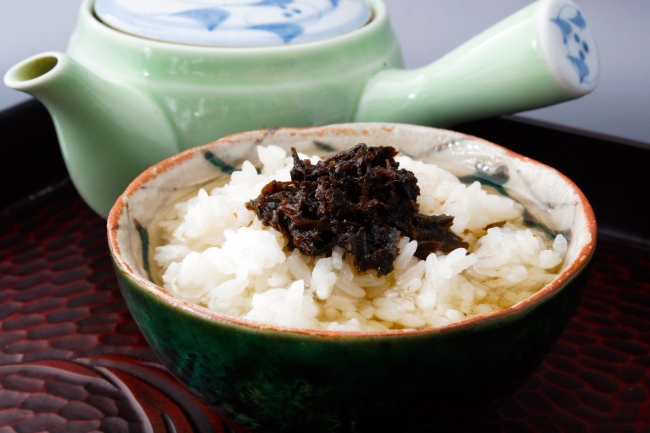
by Elizabeth Andoh | May 17, 2021 | Kitchen PROJECTS, Year-Round
Try making OCHA-ZUKÉ in your kitchen The two major components are: BROTH and TOPPINGS. Start by picking a broth that will define the character, and general flavor profile, of your ocha-zuké. The recipe for making KELP-ENRICHED TEA BROTH offers several options for...

by Elizabeth Andoh | May 12, 2021 | Kitchen Culture, Year-Round
Ocha-Zuké お茶漬け Ocha-zuké, rice moistened with green tea broth, is Japanese comfort food at its most basic – a reliable stand-by that can be quickly assembled as hunger, or the mood, dictates. A delicious way to enjoy leftover rice, ocha-zuké is a favorite, late night...
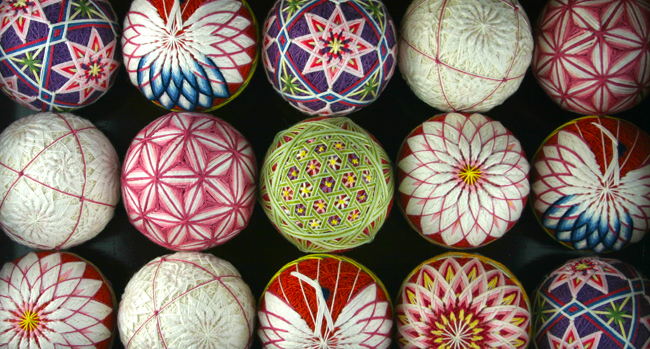
by Elizabeth Andoh | Feb 22, 2021 | Kitchen Culture, Year-Round
Pom Pom Sushi Temari-Zushi 手まり寿司 Like many frugal Japanese women who managed households in the early and mid 20th century, my mother-in-law, Kiyoko Andoh, practiced thrift in and out of the kitchen. She saved bits and pieces of cloth, turning them into quilted...

by Elizabeth Andoh | Jan 12, 2021 | Kitchen Culture, Winter, Year-Round
おでん ODEN Various ingredients find their way into the belly-warming stew known as oden. Most versions include myriad sausage-like items made from surimi (fish and seafood ground to a paste). Some of these are deep-fried while others are boiled, roasted, grilled or...





















